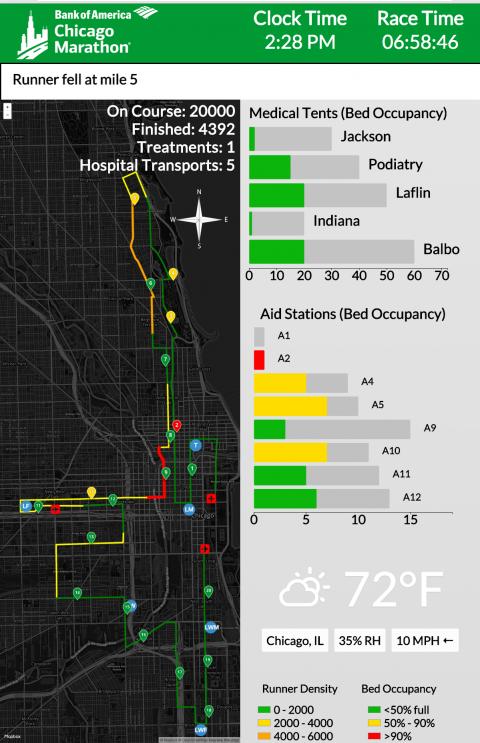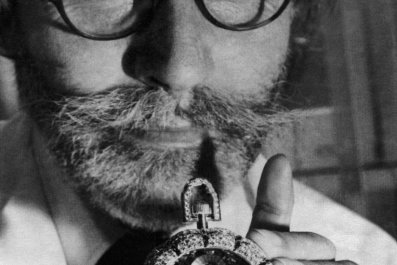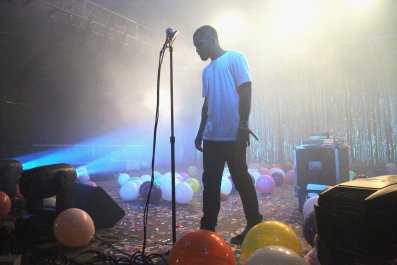As more than 40,000 runners prepare this year to toe the line at the Chicago Marathon on October 9, Northwestern University engineering professor Karen Smilowitz and her team of students are set to monitor the event with a data-visualization system that will display a detailed breakdown of the race as it unfolds.
The system compiles all kinds of information on the marathon—the course map, runner density, location of lead runners, current temperature, capacity of medical tents—on a computer dashboard and displays it on a large-screen TV in the event's central command center. Dozens of race officials, city organizers and medical personnel plan to gather there, under a tent in the city's Grant Park, to oversee the marathon, ensure smooth operations and respond to emergencies.
On the course, runners pass checkpoints about every 3 miles. But the distribution of runners between the markers is irregular. That's where Smilowitz's race-simulation program is important: Her team is attempting to produce a real-time model of the race by combining data from previous Chicago marathons with periodic updates from the checkpoints. The system analyzes the information and can predict, for example, where runners will be if the temperature rises dramatically. With this information, personnel can foresee how many runners might seek help at certain aid tents along the course and then transfer volunteers to be where they are needed. "We can't tell you where runner 123 exactly is, but what we can do is to say there are approximately 500 runners between mile 1 and mile 3 at this time," says Bruno Peynetti, a former student who worked on developing the system.

This race doesn't run itself. At the 2007 Chicago Marathon, officials allowed runners to race for three and a half hours when high humidity and record-setting fall temperatures forced them to partially stop the race. By then, the large number of dehydrated runners had overwhelmed many of the medical tents and water stations.
Since then, race officials have implemented systems such as the command center and Smilowitz's program to communicate more efficiently and to prepare for an emergency before it becomes dire.
Smilowitz's group has adapted the program to other races, including the Houston Marathon and the Shamrock Shuffle, an annual 8-kilometer race in Chicago. The team hopes to commercialize the system for other large-scale sporting events, concerts and parades, and to expand it to collect data on the race's spectators.
That will be a challenge. Think 40,000 runners is a big crowd? Chicago Marathon organizers expect 1.7 million fans to line the route this year. And Smilowitz wants to keep an eye on all of them.




















